One of life’s recurring pleasures is coming upon a book I wasn’t looking for—then being powerless to look away.
Three weeks ago, with a few minutes to spare before heading to a nearby meeting, that scene played out at a local library. There, prominently displayed along with other new releases, was a book whose cover was graced by a photograph of girls’ basketball players, uniforms and haircuts from yesteryear, cutting down a net in victory.
This was my introduction to “State: A Team, a Triumph, a Transformation,” by Melissa Isaacson.
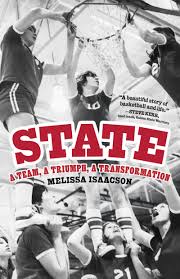
Though we have never met, I have known of Melissa for nearly 30 years, dating back to her time as a Chicago Tribune sports reporter and columnist. So, I have read countless stories she wrote about the Chicago Bears, the Chicago Bulls, and beyond. But I never knew her own coming of age story as a voraciously hungry high school basketball player. That came in the mid- to late-1970s, during the early years of Title IX opening the door to high school competition for girls.
As Isaacson acknowledges more than a few times, the book took many years to write, as she squeezed it into an already-busy schedule while overcoming periodic bouts of inertia, that bane of many authors and would-be authors. I am grateful she persisted, because the finished product is a lovely, heart-breaking, heart-warming, bittersweet and genuine coming-of-gender treasure.
It’s much more than a sports book, too, with Isaacson delving into the behind-the-scenes drama, trauma and triumph of her own family as well as those of her teammates, coaches, and others. Those subplots underscore the truth that we never really know all that is going on with someone else, so our default keys should be kindness, empathy and support.
In addition to those strengths, “State” resonated with me on at least four levels.
As a Former Player:
Like Melissa, I was an aggressive player long on desire with a certain ceiling in the talent department, willing to throw my body around in order to stay on the court. However, in terms of pure hunger, I have to concede that Melissa eclipsed me, a truth reflected by the 5 a.m. informal practice times she and other determined teammates carved out in order to grow their game and conditioning.
Turning the pages stirred feelings similar to those that washed over me a few years ago as I read Pat Conroy’s “My Losing Season.” In that 2002 memoir, Conroy focused on his senior year (1966-1967) as the starting point guard of The Citadel’s men’s basketball team. In “State,” Isaacson recalls her journey in the burgeoning girls’ basketball program at Niles West High School in suburban Chicago.
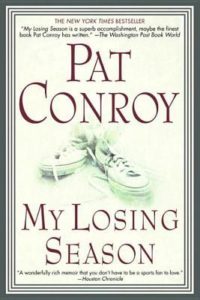
Unlike Conroy’s final season, in which The Citadel lost two-thirds of its games, Isaacson’s team was a perennial powerhouse, culminating in a redemptive 1979 state championship.
Both books tugged at me to do something along those lines and reflect—perhaps even report—on my own basketball past.
It’s doubtful that a book of the ’85-’86 Marshfield (Ma.) High Rams is forthcoming, but here’s a nutshell: I played basketball on the South Shore of Boston, capped by a 10-10 season in the Old Colony League, a so-so mark that included exhilarating highs and extreme lows that ever since have served as personal reservoirs of confidence and regret.
My best friend and I were co-captains, months after a basketball camp encounter with the high-flying, beloved and ultimately ill-fated Len Bias that was surreal in retrospect.
For years, the Marshfield High basketball court doubled as the Boston Celtics’ summer rookie camp. Years later, when I met Larry Bird while on assignment covering LeBron James, Bird chuckled at my observation that we had played on the same court (though at different times, and against dramatically different competition).
And just as Isaacson as a teen had the good fortune of coming into the orbit of Jerry Sloan, the kind and recently-retired Chicago Bull, I had the honor of having my shooting form brusquely critiqued by Red Auerbach, the curmudgeonly cigar-waving Celtics coach and front-office legend.
As a Youth Basketball Coach:
I cherish the experiences I had as basketball coach of my son’s and daughter’s teams for roughly 10 seasons, combined, through the local park district.
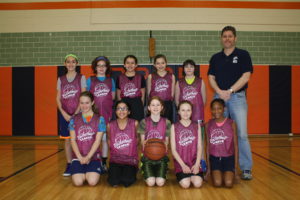
Those years were filled with the thrill of game-winning shots, the disappointment of playoff losses, the joy of winning two championships, the frustration of a few winless seasons, and above all, the privilege of teaching the fundamentals of a game I love to scores of children.
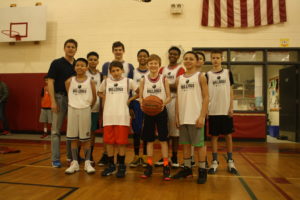
I learned much along the way, too. It didn’t take long to detect significant distinctions between my two squads, perhaps most notably in the arena of coachability. (If you have to wonder whether boys or girls are more coachable, consider this: I took a one-year sabbatical from the helm of my son’s team because his aversion to taking instruction—or maybe it was my inability to convey it effectively enough—was damaging our relationship.)
Likewise, Isaacson touches on that gap in coachability, as experienced by her second varsity coach, Gene Earl. He had previously coached only boys and took on the role reluctantly. In short order, he was astonished by the eager receptivity of the young ladies he inherited in a program whose foundation was fostered by Arlene Mulder. She was more versed in organizational structure and interpersonal motivation than the game itself and, remarkably, would later become the highly respected and longtime mayor of Arlington Heights, Illinois.
As a Sportswriter:
More than any other “beat,” covering high school and college sports dominated my early years as a journalist. I suspect my prose is part of numerous classmates’ scrapbooks, as I covered virtually every sport other than my own during my junior and senior years writing for the Marshfield Mariner and serving as editor of the high school newspaper, The Ram Pages.
Lord knows I wasn’t nearly good enough to play at Northwestern University, but I could certainly cover the team (as well as most every other sport) for The Daily Northwestern.
Throughout “State,” Isaacson taps into local media coverage of her team, often from publications that are no longer in existence. Compared with the current bits and pieces of local journalism coverage of high school sports, her Niles West Indians received the equivalent of the full-court press that powered much of their success. Nowadays, the few remaining local media outlets do their best to keep up with high school sports, but there are many gaping holes.
As a Father of a Female High School Athlete
About halfway into “State,” it began to sink in that my 16-year-old daughter and her teammates (in cross country and soccer) are standing on the shoulders of all the women, like Isaacson, who came before them.
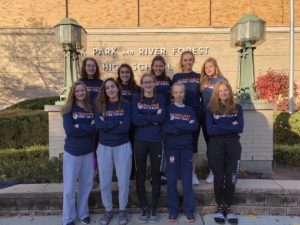
For nearly a half-century, the battle has raged for more equitable funding, court time, respect, and all the other ingredients that coalesce into the formation of a functional team. The struggle continues, certainly, but no doubt there have been substantial strides.
Over the next few weeks, inspired in part by Isaacson’s book, I will be filling the gap journalistically and writing about my daughter’s cross-country team’s postseason efforts. Last year, the Oak Park and River Forest Huskies came in 10th among Class 3A Illinois high schools—matching the best result in school history.
This year, it’s almost certain they will advance through their Regional and Sectional competitions to qualify for the season-ending race that draws all the top runners from across the Prairie State to Peoria.
Fittingly, that race is known in shorthand by the same name that Isaacson and her contemporaries called it 40 years ago: “State.”
Related Posts:
Free Throw Shooting (And Tracking) Zeal Garners Local Media Coverage
Damian Lillard’s epic buzzer-beater: off-the-charts talent vs. out-of-your-mind bad judgment
